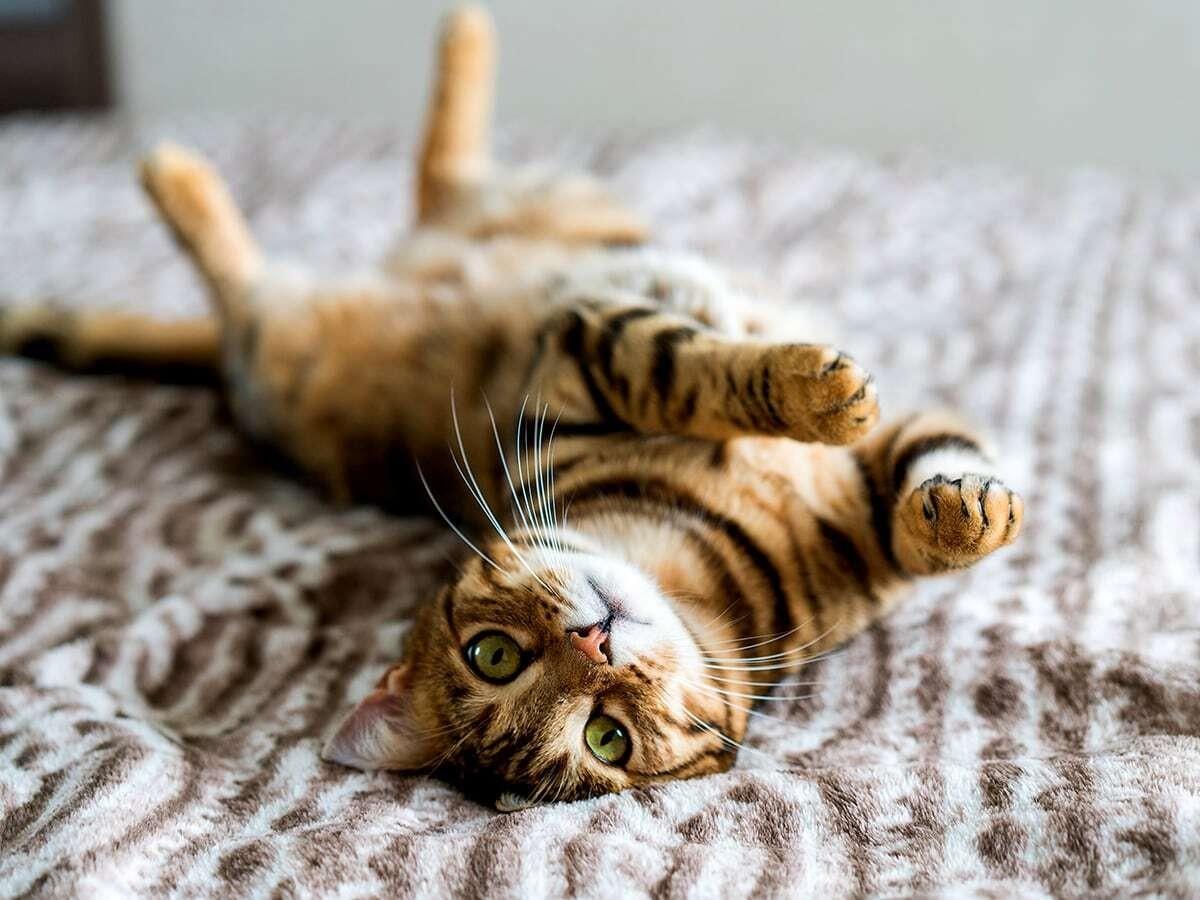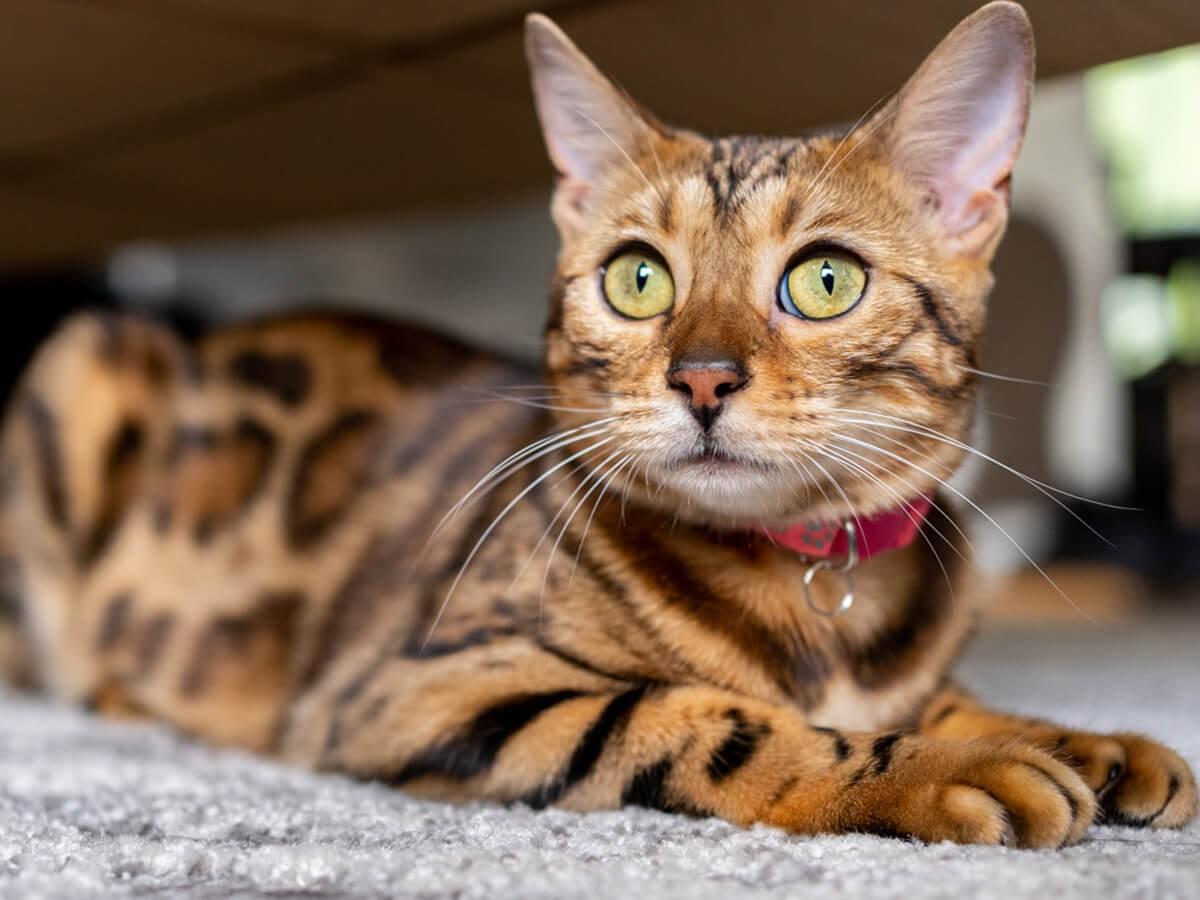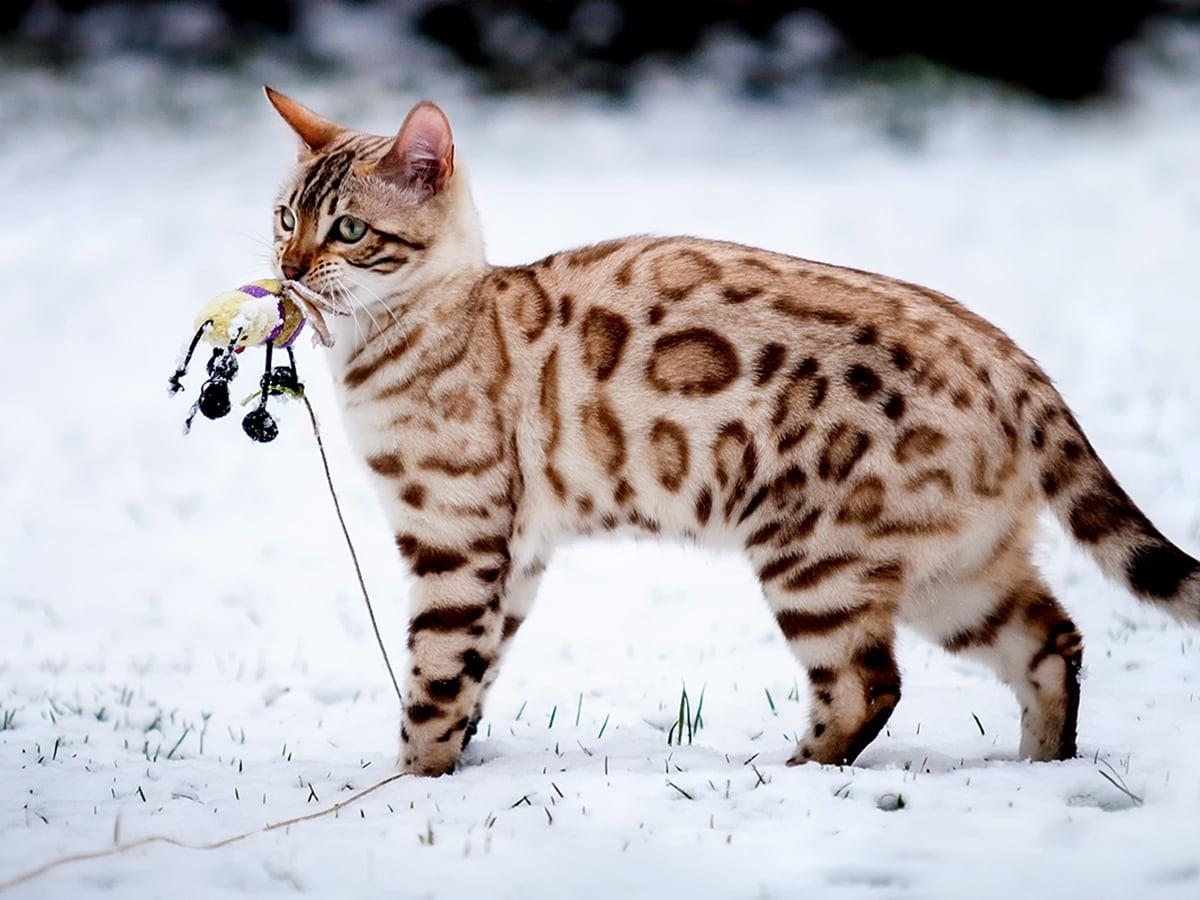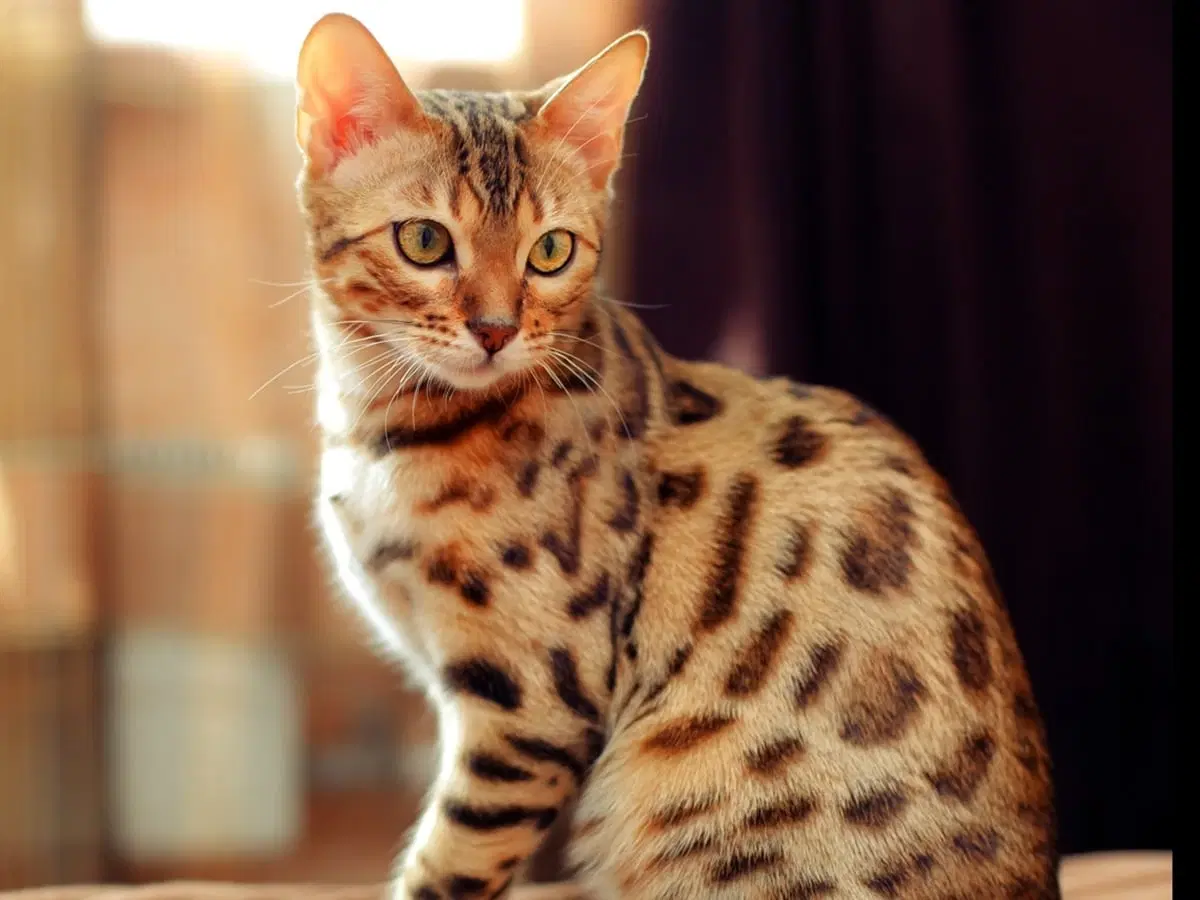Bengal Cat Characteristics
Life expectancy: 10 – 15 years
Adult Weight: 8 – 10 lbs.
Adult Height: 14 – 18 in.
Bengal cats, with their mesmerizing spotted coats and playful spirit, are a captivating breed. But before welcoming one of these beauties into your home, understanding the financial commitment involved is crucial. This guide explores the costs associated with Bengal cat ownership, from adoption or breeder fees to ongoing expenses and potential health concerns.
How Much is a Bengal Cat?
Choosing between adopting or buying a Bengal cat involves weighing various factors:
Adopting a Bengal Cat: $75 - $100
Offers a loving home to a cat in need, with adoption fees typically ranging from $75 - $1004. While the breed may not be guaranteed, many shelters already spay/neuter and vaccinate adopted cats.
Buying a Bengal Cat: $1,500 - $3,000
Provides the assurance of a purebred Bengal cat, with costs ranging from $1,500 to $3,0001 for kittens. Responsible breeders prioritize health and temperament but expect higher prices for superior bloodlines.
Why Are Bengal Cats So Expensive?
Several factors contribute to the high cost of Bengal cats:
Rarity: Developed by crossing Asian Leopard cats with domestic shorthairs, Bengal cats are a relatively new, hybrid breed. Their limited numbers influence their price.
Selective Breeding: Reputable breeders carefully select breeding pairs to maintain desired traits like the spotted coat and temperament. This selective breeding process requires significant veterinary care.
Breed Popularity: The unique appearance and energetic personality of Bengal cats have driven up their demand, allowing breeders to command premium prices.

Initial Costs of Bengal Cat Ownership
Here's a breakdown of the initial costs to consider:
Category | Cost Range |
|---|---|
Adoption Fee | $75 - $1004 |
Breeder Cost (Kitten) | $1,500 - $3,0001 (can be higher for superior bloodlines) |
Spaying/Neutering (if not already done) | $45 - $3505 |
Microchipping | $50 - $753 |
Initial Supplies (carrier, bed, food/water bowls, toys) | $3001 |
Monthly Expenses for a Bengal Cat
Owning a Bengal cat involves ongoing monthly expenses to ensure their health and happiness:
Category | Cost Range |
|---|---|
High-Quality Food | $30 - $901 |
Cat Litter | $201 |
Treats and Cat Toys | $201 | | Pet Insurance |
Bengal Cat Temperament, Care Requirements, and Common Health Problems
Temperament:
Bengal cats are known for their playful, energetic personalities. They thrive on interaction and enrichment activities due to their intelligence.
Care Requirements:
Exercise: Bengals require daily playtime to expend their energy. Consider interactive toys, scratching posts, and climbing structures.
Grooming: Regular brushing helps manage their shedding and keeps their coat healthy.
Enrichment: Provide puzzles, food puzzles, and training opportunities to stimulate their minds.
Common Health Problems:
While generally healthy, Bengal cats may be prone to certain conditions6:
Hypertrophic cardiomyopathy (HCM): A heart condition.
Patellar luxation: Dislocation of the kneecap.
Progressive retinal atrophy (PRA): A degenerative eye disease.

Is a Bengal a Good House Cat?
Yes, Bengal cats can be good house pets because of how loyal and loving they are in the family unit. They are also renowned for having a good attitude toward children, so they are perfect for cat owners with children.
What Impacts the Cost of a Bengal?
There are multiple factors that affect the cost of purchasing a Bengal kitten.
SBT Kittens - When you are looking for a Bengal kitten, you will most likely find an “SBT” (Stud Book Tradition). These cats are generally at least four generations removed from the original Asian Leopard Cat that they originate from. If you want a kitten that is closer to the original cat, you should expect to pay more.
Bengal Kitten Quality - Breeding for quality involves breeders investing a lot of money in quality bloodlines. This effort helps preserve and improve the Bengal breed but also leads to higher prices for their kittens.
Bengal Kitten Age - Raising Bengal kittens is expensive, thanks to the proper nutrition and time dedicated to adequate socialization and maintaining their environment. If you come across an unusually cheap kitten below 8 weeks, you should consider this a major red flag. Kittens that are weaned too early are at risk of developing lifelong issues.
What is Included With Your Kitten - Breeders often have their kittens spayed or neutered, and vaccinated before sending them to their new homes. If your cat comes with these procedures done you can expect to pay more for the kitten.
Expert Insights From Spot
Bengals are stunning cats with a unique wild look. While generally healthy, they can have specific veterinary needs. Spot's data shows that Bengal owners most frequently submit claims for:
Clinical Checkups: $502* per visit
X-rays: $1,065* per claim
Deworming: $231* per claim
These costs highlight the potential financial responsibility of Bengal ownership. Pet insurance can help alleviate the burden of unexpected veterinary expenses.

Frequently Asked Questions
What is the lifespan of a Bengal cat? The typical lifespan of a Bengal cat is generally between 10 to 15 years, though with excellent care and good genetics, some can live even longer.
What factors influence the price of a Bengal cat in 2025? In 2025, the price of a Bengal cat is influenced by its generation (how close it is to its wild ancestor), the quality of its coat pattern and color, its lineage (pet, breeder, or show quality), the breeder's reputation and health testing practices, and regional demand.
Are Bengal cats from champion bloodlines significantly more expensive? Yes, Bengal cats from champion bloodlines are significantly more expensive, as their pedigree indicates superior genetics, adherence to breed standards, and often extensive health testing, making them highly sought after for breeding or show purposes.
Is it legal to own a Bengal cat in the US? Yes — owning a Bengal cat can be legal in the U.S., but it depends heavily on your state, city, and even the cat’s generation (how many generations removed from its wild ancestor).
More About Spot Pet Insurance
Cat insurance can help provide financial assistance for covered veterinary care in case of unexpected accidents, illnesses, or injuries. Our plans can help pet parents manage the eligible costs of covered veterinary care and help ensure that their pets can receive the best treatment possible. Here are some ways that Spot pet insurance plans can help:
Covers Unexpected Veterinary Costs: Spot pet insurance plans help cover the eligible costs of unexpected veterinary treatments, such as emergency surgeries, X-rays, and prescription medications for covered conditions.
Customizable Plans: Choose your annual limit, reimbursement rate, and deductible from a range of options, and create the plan that will fit the needs of your pet and your budget.
Peace of Mind: With Spot pet insurance plans, pet parents can know that they can provide the best care for their pet with less worry about the cost.
To learn more about Spot Plans or to get a free quote, click here.
Key Takeaway
Bengal cats are undeniably captivating companions. However, responsible ownership requires careful consideration of the financial commitment. By understanding the initial costs, ongoing expenses, and potential health concerns, you can make an informed decision about welcoming a Bengal cat into your life.

As Spot’s resident cat enthusiast, I am dedicated to researching and sharing information that helps pet owners take the best care of their pets. Pet ownership comes with it’s share of challenges, but my goal is to help make this journey easier.
*2024 Spot Pet Insurance Services, LLC. claims data












